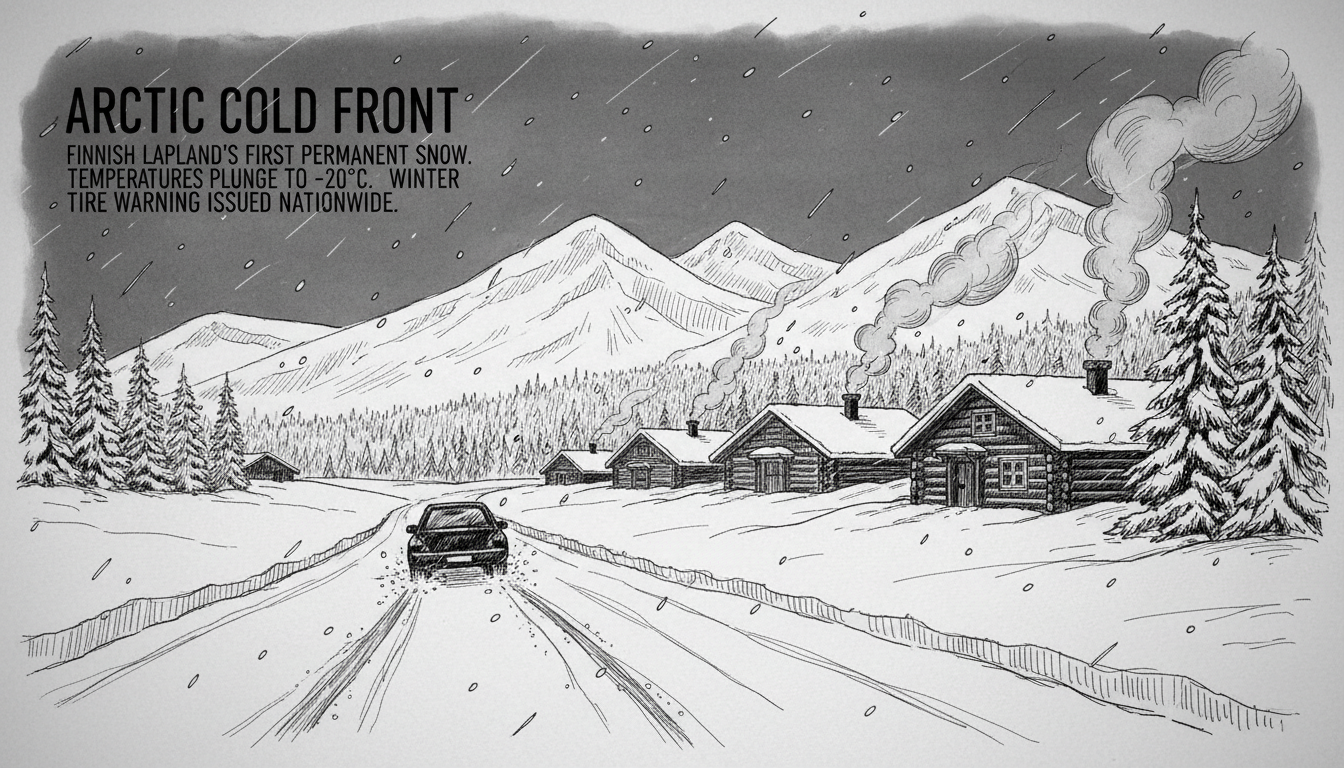A dramatic temperature shift is sweeping across Finland this week. The country is experiencing its first major cold outbreak of the season. Southern and southwestern regions currently maintain above-freezing temperatures between 5-8°C due to warm air currents. Central Finland and Lapland face much colder conditions.
Meteorologist Helena Laakso from the Finnish Meteorological Institute provided details about the changing weather patterns. She explained that cloud cover will increase across central regions by Tuesday. Northern Ostrobothnia, Kainuu, and Southern Lapland may see snow or sleet as early as Tuesday evening.
The real transformation arrives during the weekend. A powerful low-pressure system will move across the entire country. This system will bring substantial snowfall and plunging temperatures. Northern areas could experience temperatures dropping to -20°C.
Laakso confirmed the widespread impact. "Cold air will discharge across the entire country during the weekend," she stated.
This weather shift marks Finland's transition toward winter conditions. Lapland will likely see its first permanent snow cover of the season. Driving conditions are deteriorating rapidly across the country.
Road safety has become an immediate concern. "Driving conditions are extremely poor in the north and poor in the south," Laakso noted. She strongly recommended winter tires for all vehicles by the end of the week.
The early cold snap carries economic implications. Energy consumption typically spikes during such temperature drops. Municipalities must accelerate winter preparedness measures. Transportation networks face immediate challenges with the sudden weather change.
International visitors should note that Finnish infrastructure handles winter conditions effectively. The country's buildings feature excellent insulation. Public transportation maintains reliable service despite snowfall. Proper winter clothing remains essential for comfort during outdoor activities.
Finnish residents are accustomed to such rapid seasonal transitions. The country's geographical position makes it vulnerable to Arctic air masses. This particular cold front appears stronger than typical early-season outbreaks. It may establish winter conditions several weeks earlier than average.
Tourism operators in Lapland monitor the situation closely. Early snow could benefit winter tourism if conditions stabilize. The timing coincides with the approaching holiday season when visitors seek authentic winter experiences.
The weather development demonstrates Finland's climatic diversity. Temperature differences of nearly 30°C can exist simultaneously between southern and northern regions. This variation creates distinct seasonal experiences across the country's long north-south expanse.

